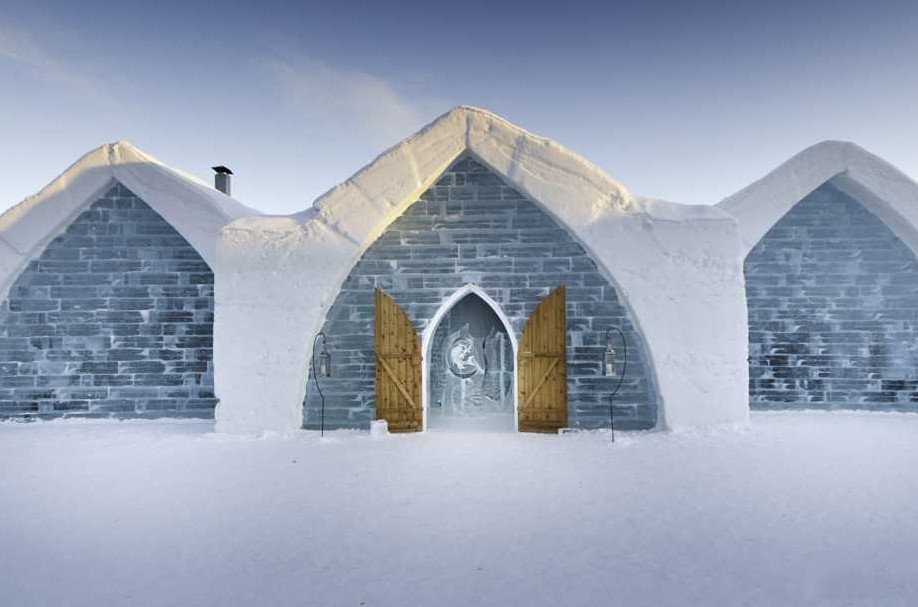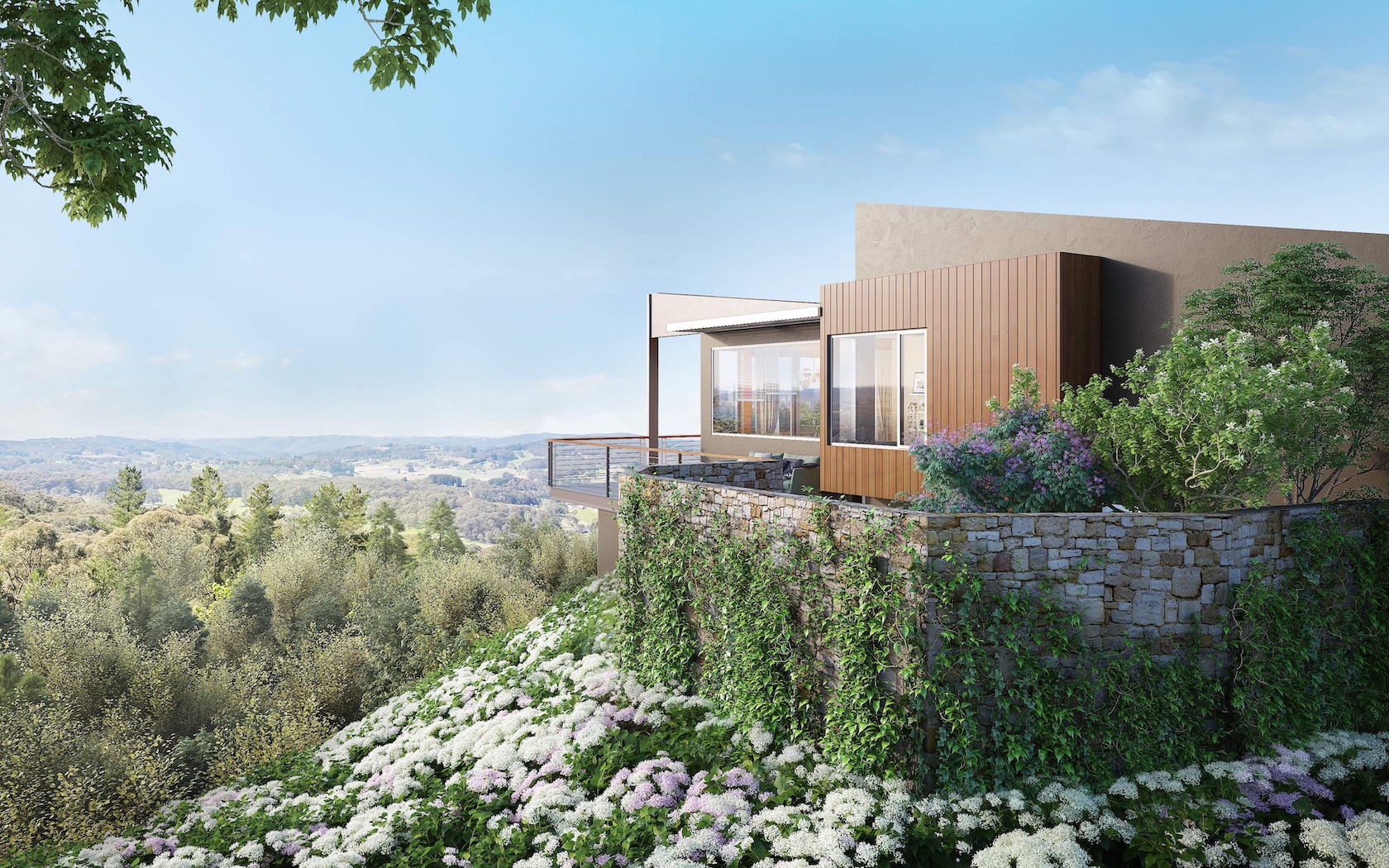Roadtrippin’: A Long Weekend Tour Of Tasmania

From compact cars to full-size sedans and luxury cars to convertibles, Avis Rent A Car has the rental vehicles to make your next trip a memorable one.
Sophia Softky is an armchair philosopher and wayward American trying…
From the vast outback to our beautiful coastlines, Australia offers some of the greatest drives in the world. We’ve partnered with Avis to bring you a series of tales from the road. Having previously roadtripped to The Sunshine Coast, to Sydney’s hidden bush hostel and on a perfect weekend out of Melbourne, this time around we learn that the best way to discover rugged and remote Tasmania is by vehicle.
Friday morning
9:30am: My travel companion and I arrive in Hobart after a short flight from Melbourne bright and early Friday morning, and head straight for the Avis desk to pick up the keys to our sweet new ride. After piling our luggage and camping gear into the boot, we hop in and start heading north-east on the Tasman Highway through steep, brush-covered hills, catching the occasional glimpse of ocean. We are headed to Tasmania’s east coast, famous for pristine white beaches, seaside vistas, world class pinot noir and unreal seafood. The plan is to head up to Freycinet National Park – a verdant, mountainous peninsula that extends about 20 kilometres along Great Oyster Bay. Established in 1916, Freycinet is Tasmania’s oldest national park, and home to the world-famous Wineglass Bay, which is regularly voted one of the top ten beaches in the world. From there, we’ll go inland to Cradle Mountain National Park, before returning to Hobart. It’s going to be a whirlwind tour, but we’re up to the challenge.
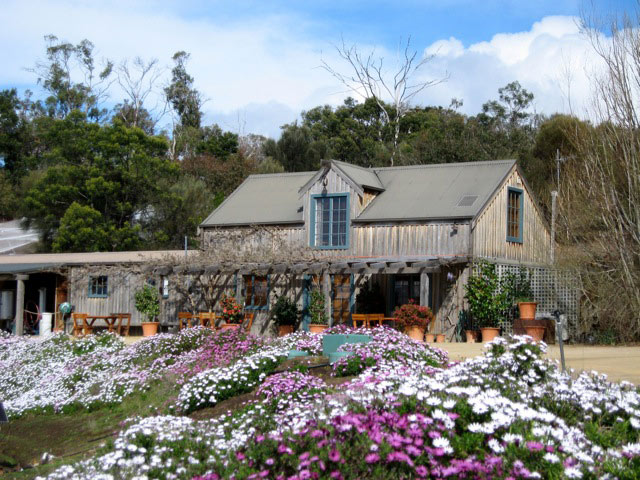
11:45am: Even though we should probably stop somewhere to eat a real lunch like responsible adults, we instead detour to stop at Kate’s Berry Farm, a tiny shop perched on top of a hill with a view of the coast. They sell every berry product under the sun, and we sample about six types of preserves each (the mingledberry was my personal favourite) before ordering a double scoop of lavender and strawberry-choc ice cream to share.
Friday afternoon
12:30pm: When I realise that our route is going to be taking us past the cellar door of award-winning Devil’s Corner winery, I think nothing of stopping to sample the goods. Devil’s Corner is located right on the edge of the Moulting Lagoon with a stunning view of The Hazards, a chain of rugged, pink granite mountains that runs along the Freycinet peninsula. I happily take advantage of the free tasting service and sample several excellent wines. My travelling companion is feeling a bit left out, acting as designated driver, but we agree to buy a bottle of pinot noir to share later at our campsite.
1:30pm: We arrive at the entrance to Freycinet National Park and make it to the campground we’ve reserved in Honeymoon Bay. We’re practically on the beach, so after pitching our pop-up tent, we take a short walk down to the water and spend an hour admiring the contrast between the salmon-pink sand and the vivid blue-green water, which is incredibly clear and still. To the left there are mountains and to the right is the picturesque town of Coles Bay. It’s such a peaceful scene that I have to practically tear myself away.
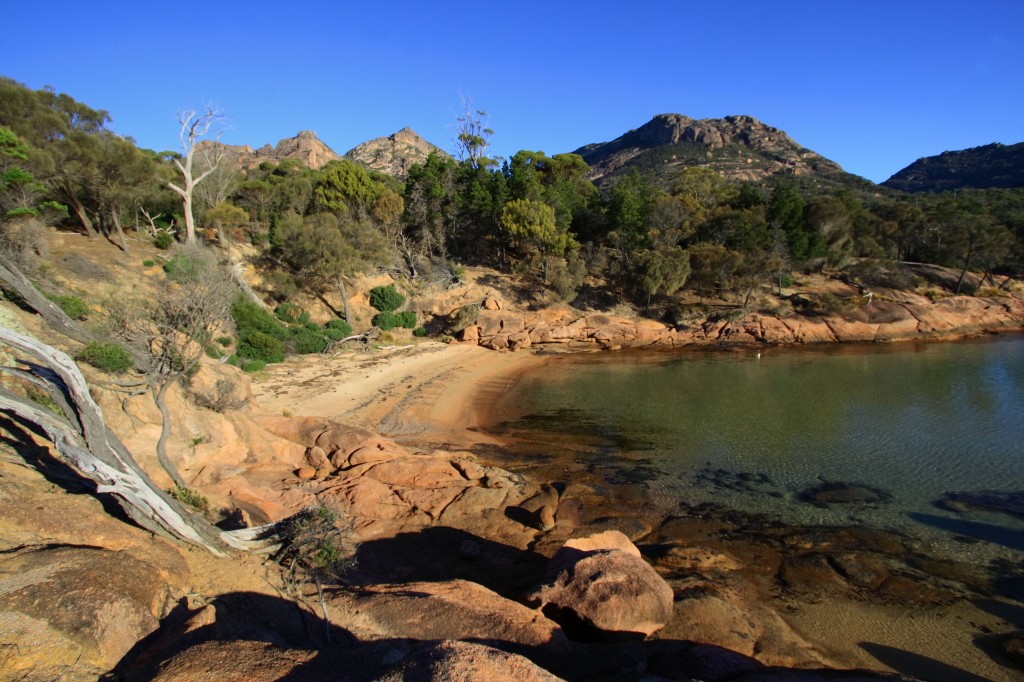
4pm: We can see on the map that the hike to the Tourville Lighthouse lookout is only a short drive from our campsite, so we get back in the car and head off. The ocean view at the top is amazing even though we can’t go near the lighthouse itself, much less climb it. We spend some time looking out at the water trying to spot whales before driving back down the hill to have a short rest and a snack.
Friday night
7:30pm: It’s getting cold back at the campground, so we bundle up and eat a makeshift dinner of sandwiches before getting in the car and driving to back out of the park on our way to the evening’s main attraction. We are headed to the tiny town of Bicheno (pronounced BEE-sheh-no), just 15 minutes north of the National Park and the meeting site for a night tour of a Tasmanian Devil sanctuary, appropriately named “Devils in the Dark”. The plan is that a tour van will pick a group of us up from Bicheno at 8pm and drive us to an “undisclosed location”, where for $55 per person we can spend an hour and a half watching Tasmanian Devils rip apart a prey carcass at close range while being served local wine and cheese. One online review warned us that we would hear “every screech, squeal and crunch of the bone” as the Devils feed – I am so excited I can barely contain myself.

The tour guide who picks us up is more passionate about these animals than I have ever been about anything, and it’s a real pleasure to listen to him talk about the Devils. We arrive at the “hide” and sit facing windows covered by curtains. The lights are dimmed, the curtains are pulled back, and through the glass we can see a large group of Devils only a few metres away, snarling and fighting over a wallaby carcass. It’s gruesome, but absolutely fascinating.
Back at the campsite, a gang of possums has invaded our campground, so we make sure that our food is locked securely in the car before crawling into the tent for bed.
Saturday morning
8am: When we wake up, the weather is misty and damp – not ideal for our planned hike to the famous Wineglass Bay lookout, but it will have to do. We huff and puff our way up the trail – despite the chill in the air it’s a steep, sweaty climb, but we are rewarded at the lookout point by a spectacular aerial view of Wineglass Bay. Other hikers are posing in front of the lookout railing snapping pictures, and for the first time selfie sticks make sense to me.

11am: Before we leave the park, we stop at Friendly Beaches, an expanse of pristine white sand broken up by swathes of flat black stone and pink granite boulders. Even though the day is overcast, the ocean is a startling electric blue, and we spend about a half hour taking in the view, exploring tide pools and meandering along the sand spotting washed up Bluebottle jellyfish.
For lunch, we eat at the Freycinet Marine Farm, a 150 acre area where fresh Pacific oysters and Tasmanian blue mussels are harvested daily and served raw, steamed or fried to seafood-frenzied tourists. We order the pan-fried garlic scallops and a dozen natural oysters, so fresh they are still pulsing in their shells. They taste incredible – creamy, slightly sweet and with a distinct flavour of clean, salty ocean tang.
Saturday afternoon
3:30pm: Heading north on the National Highway 1 is slow going because we keep getting stuck behind tractors, but soon enough Launceston appears on the horizon. Rather than passing through, we detour and head west along the Great Western Tiers tourist route that runs through a series of scenic towns that look as though they haven’t changed at all since 1833. I’m struck by how stunningly beautiful the countryside is here – rolling golden hills, fields full of glossy black cows, majestic eucalypts, and enormous mountains visible to the south.

Saturday night
6pm: We stop in the town of Deloraine for dinner at the Bush Inn, a stately Georgian made of brick. The chicken parma I order is amazing, but when I reach over with my fork to steal a bite of my companion’s lamb shank, I accidentally drop a chunk of meat into my water glass and am too embarrassed to ask the waitress for another.
At the caravan park where we are staying the night, we take our first hot shower in two days and sit on the lawn outside of our tent, watching the sunset. Then, to bed.
Sunday morning
6:45am: We are up with the sunrise because it will take us at least an hour to drive the windy mountain roads that lead from Mole Creek to the entrance of Cradle Mountain-Lake St Clair National Park. There are chickens pecking the grass around our tent, and as we cook breakfast I throw them bits of oatmeal and wallaby sausage.
7:30am: It’s a white knuckle drive up through the Tiers, but the view when we pull over onto a bluff labelled “Top of the World Lookout” is well worth the carsickness. From up here, we can see mist pouring off the mountains into the valley we’ve just left, with the sun lighting it all up from above – “on top of the world” almost doesn’t do it justice.
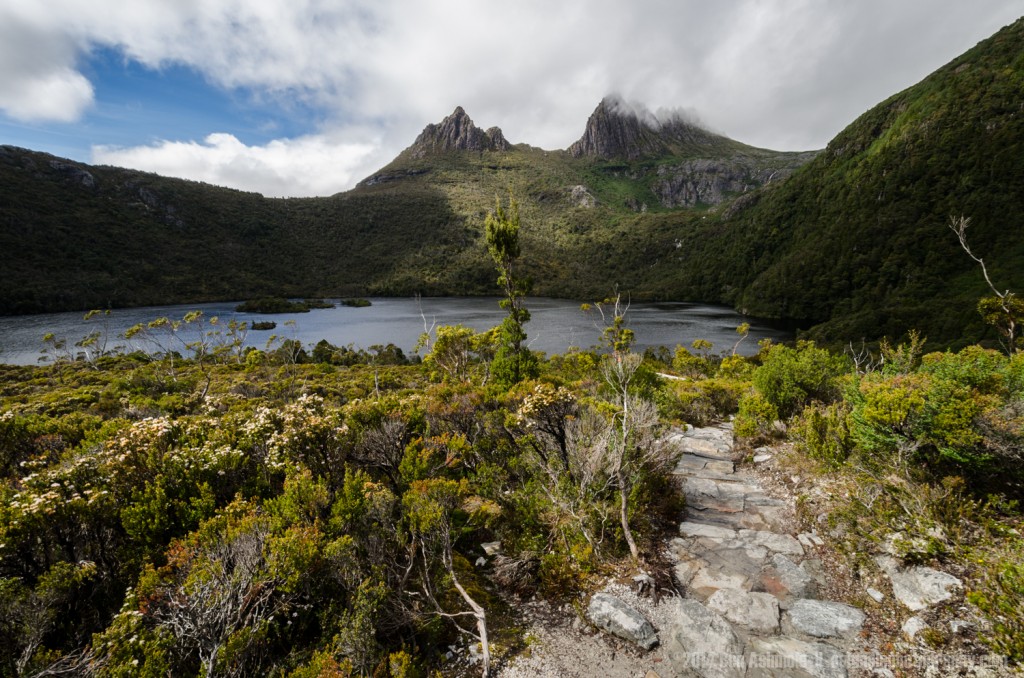
9am: We don’t have time to do the epic trek up to the summit of the iconic Cradle Mountain, but it’s visible from practically everywhere in the park (at least when the fog clears), so we don’t feel like we’re missing out. Instead, we do several short-ish walks – around the placid Dove Lake as well as through the Weindorfer woods, Pencil Pine falls and “Enchanted Forest”. Everywhere we walk is absolutely breathtaking, in very different ways. A moor dotted with spiky, alien plants reminds me of Wuthering Heights, while in contrast, a forest with moss-covered tree branches intertwined overhead and underfoot gives the impression of walking through a single, gigantic rhizome.
Sunday afternoon
3pm: A day of nonstop hiking has left us exhausted, but we rally our strength, leave the park, and begin the long four hour drive back south to Hobart, stopping only to pick up snacks from a servo. When we pull into the Avis parking lot and hand back the keys, we are tired but very happy – in just three days, we’ve seen enough natural beauty (plus consumed enough fresh seafood and amazing wine) to last a lifetime.
(Lead image: CucombreLibre/Flickr)
Avis car hire is the perfect way to make more of your holiday. Roadtrips give you the opportunity to see different sides of your destination. With such freedom, the possibilities are truly limitless. Stay tuned for more Avis roadtrips.
Sophia Softky is an armchair philosopher and wayward American trying to make her way in Melbourne. Sometimes she writes things, and sometimes they get published. She is a millenial and therefore lives inside of the Internet.



